For seven days and seven nights the rain came in drizzles, downpours and late-winter mist. When the sun finally appeared on the first of March, the golden rays summoned a dramatic transformation. Spring had been waiting just on the other side of those rains as the first wave of tentative green blanketed the neighbor’s horse pasture. Spring beauties and bluets had popped up in the yard while trout lilies glowed like an ethereal promise in the somber woodland behind our home. And from the freshened rivulets and filled forest potholes came the melody of frogs.
The spring peepers and cricket frogs couldn’t wait until sundown to start their love songs. One was singing in a tiny hole of water poured from a culvert in the corner of our yard. My two-year-old granddaughter, Nixie, heard the chirping and wanted to investigate, and so we did. Her “Pa” never needed prompting to look for frogs in a mud hole anyway, so before she even asked we were on the way.
Of course the frog went silent as we neared. Despite their lusty calling, frogs don’t let the pink haze affect their vigilance. So we stopped to wait and listen as Nixie’s serious blue eyes scanned the water and then looked into mine with a questioning expression. That’s when I noticed a soft, subtle and sinuous ripple in the fresh tufts of flooded grass. It was a salamander. Salamanders aren’t slouches when it comes to alertness, either, and the little olive-colored amphibian scuttled into the culvert’s mouth as soon as I stood up. But I knew where we could find more. They would be an easier catch and an excellent introduction to the Mason jar naturalist lifestyle for Nixie.
A Mason jar naturalist is as simple as the name implies. You get a Mason jar (it doesn’t have to be a “Mason” jar, any old jar will do) and that becomes your mini aquarium/terrarium for any creature that will fit in it. So I gathered a bait net and jar, and we set off behind the house with the gurgling waters of a wet-weather stream as our guide.
Soon we found exactly what we were looking for, a wide and relatively deep pool with several flat rocks in the riffles leading out. We didn’t even need to flip a rock for the first encounter as an Oklahoma salamander (Eurycea tynerensis) still sporting external gills ambled across smooth stones just where the waters gained momentum for a tumble down to the next pool. I planted the net behind the salamander and feigned a grab at it with my other hand causing the little amphibian to wriggle right into the webbing. Then I lifted it clear of the water for Nixie to have a look before we put it in the jar.
More Like This
The next two salamanders came from expected hiding places underneath palm-sized flat rocks, and then we found another under a post oak leaf dropped this winter. We also uncovered a crayfish, which was the first I’ve found in this branch (and I hope indicative of better water quality), and an aquatic sow bug. The two freshwater crustaceans went into the jar as well and then we settled into a sunny spot in the cool woods and watched through the glass in silence. The jar and the water split clear white beams into a prism that danced on a brown carpet of leaves as the usually hidden life of this trickle watched us through the glass as well. After just a few minutes of mutual observation, we set them back into the chilly waters where they belonged.
Forty-some-odd years ago, that was my grandpa and me.

I’m not sure exactly how the magic happened, how those earliest memories of watching lizards, salamanders, crawdads, snakes, mice, spiders, shrews, and an assortment of various other animals through the jars instilled a deep appreciation, a reverence for the natural world. But it did. Who I am today — writer, environmentalist, hunter, angler, nature nerd — can be directly attributed to my grandpa starting me off with “critters under glass” from earliest memory. Sure, guns and fishing poles played a big part in that development as well. But I speak on behalf of the creeks and woodlands, for the wild things with a passion that doesn’t require an accoutrement. It’s unencumbered. I don’t need to protect a “resource,” and I don’t need to justify the protection of wilderness and water based on the arbitrary value our society places on them. I loved the crayfish, frogs and lizards long before I learned the value of a dollar, and even then I loved them more. I loved them just because they were.
Placing a monetary worth on the land and it’s inhabitants — though, I know, a necessary evil — still seems vulgar to me. How could I ever put a number on those memories? How can I place a dollar sign next to creatures and places that possess qualities immeasurable? It’s a desecration of all that I hold dear. I can’t help but think that the reason I feel this way is because it’s more than creatures and places to me. It’s my heritage, a natural heritage interwoven with the warmest memories of someone who loved me and shared with me those tiny, fantastic secrets. Grandpa taught me that wonder is everywhere, and then he taught me how to look for it.
I’m going to show this little cotton-top girl that wonder is everywhere and where to find it, just like my grandpa showed me. Nixie will soon have a fly rod in her hand and, before you know it, a shotgun. But her next steps, those that lead into hunting and angling, the circle of life and death, will come after my granddaughter has learned that the worth of wildness isn’t measured in bag limits, inches, accolades, or dollars.
We can teach our children about the economics of conservation, about how many dollars equals how much support and how that might save some of our wild lands, wild waters, and wildlife. But industries crumble and markets crash. When we teach our children that the most precious riches are those with an intrinsic value and show them those wonders, which are utterly priceless … well, that’s how we save the world.





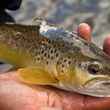

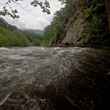



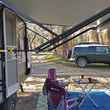
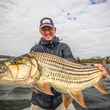



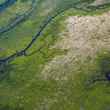




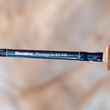
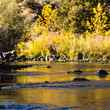





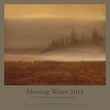
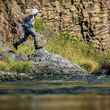
Comments
Jerry Kustich replied on Permalink
Wonderful piece...my kind of reflective reading that emphasizes the true reason we seek the outdoor experience. The author's writing took me back to my childhood.
Pages